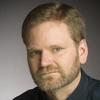Explore all the information on
Enzymes in poultry nutrition
Enzymes are proteins involved in all anabolic and catabolic pathways of digestion and metabolism. Digestive enzymes are categorised as endogenous or exogenous. Endogenous enzymes are produced by the animal and exogenous enzymes are administered from outside. Enzyme supplementation decreases nutrient loss through excreta, reduces diets nutritional levels, improves nutrient availability; thus, enhances production efficiency and profitability. In addition, exogenous enzymes hydrolyse non-starch polysaccharides, increase the usage of feed energy, reduce negative impacts of non-digestive residues on digesta viscosity, and improve gut microbial ecosystem. Cellulase, glucanase, pectinase, xylanase, galactisidases, phytase, non-starch polysaccharides degrading enzymes, amylase, lipase, cellulase, and protease are the most common enzymes used in poultry feed.
Author details: 1 Department of Animal Science and Biotechnology, Chungnam National University, Daejeon 34134, South Korea; 2 Kemin Animal Nutrition and Health, Asia Pacific, Seongnam-si, Gyeonggi-do, South Korea. Introduction Nutrient supply to meet requirements accounts for the largest share of poultry production costs, within which protein (i.e., AA) supply makes up the second largest portion. The feeding of reduced protein diets is targeted to...
Comments : 0
Recommendations: 0
Doug Korver (University of Alberta) spoke on the design of diets with essential oils, prebiotics, probiotics and enzymes, as well as the evaluation of the performance under commercial conditions, during IPPE 2019 in Atlanta, USA....
Comments : 14
Recommendations: 4
.jpg&w=3840&q=75)

40 Years of Success in China with Hy-Line (Mandarin-language video)
Suggested link
Please inform me: if I use 5000 IU/Kg feedT, how should I calculate its energy and protein in the matrix value? ...
Comments : 1
Recommendations: 0
Introduction to Immunity Immunity refers to the body's ability to resist or defend against infections, diseases, and other unwanted biological invasions. There are two main types of immunity. Innate immunity is the host's first line of defense against invading pathogens but some pathogens particularly immunosuppressive viruses have evolved sophisticated mechanisms to evade the host's innate immune responses and survive within the host. Adaptive Immunity targets...
Comments : 0
Recommendations: 2
Kurt Van de Mierop (Nutrex) talks about an advanced enzyme solution that improves feed efficiency, reduces production costs, and optimizes nutrient absorption in monogastric animals.
...
Comments : 0
Recommendations: 1
Dr. Piotr Stanislawski shares his experience with Engormix members regarding the use of enzymes in poultry diets and gives his advice on how to do it properly....
Comments : 89
Recommendations: 31
.jpg&w=3840&q=75)

Reliable and accurate nutritional data of heat processed ingredients with AMINONIR® RED
Suggested link
INTRODUCTION Cereal grains and vegetable protein sources contain between 10-75% of non-starch polysaccharides (NSP). NSP in cereals form part of the cell wall structure and in vegetable proteins, such as legumes, may also play a role as an energy storage material. As far as monogastric animal nutrition is concerned, NSP as the major part of fibre (fibre is the sum of NSP and lignin) are regarded as feed components that...
Comments : 19
Recommendations: 1
Dr. Peter Selle
By Prof. Eugeni Roura
President, WPSA Australian Branch
Dr. Peter Selle has been a dedicated and passionate figure in the Australian poultry industry for over...
Comments : 1
Recommendations: 0
.jpg&w=3840&q=75)

Introducing Afla-V ONE: Fast, precise aflatoxin detection for complete feeds and pet foods
Suggested link
Mike Persia (Virginia Tech) discusses direct-fed microbials, their modes of action, and their positive impact on energy and eggshell quality in this Engormix interview during IPPE 2025 in Atlanta, USA....
Comments : 0
Recommendations: 0
In this Engormix interview during IPPE 2025 in Atlanta, USA, Chongxiao (Sean) Chen (University of Georgia) offers information on resources provided by his UGA Poultry Science group: a Poultry Nutrition 101 Course and a newsletter....
Comments : 0
Recommendations: 0
Introduction: Due to the constant genetic evolution in both the production of broilers, nutritionists must constantly adapt their nutritional recommendations and feeding programs to maximize economic results at all times. These management and nutrition decisions must take into account: the animal (potential for growth), environmental conditions and the composition of the feed, which affect feed consumption and, consequently, the performance of birds. And economic...
Comments : 13
Recommendations: 11
Life Rainbow is glad to invite you to attend a lecture titled "Biotechnological Development and Application of Mycotoxin Degrading Enzymes in Livestock", presented by Asst. Prof. Chung-Feng Chiang, Ph.D. from Department of Animal Science, National Pingtung...
Comments : 0
Recommendations: 2
Abiodun Bello (Danisco Animal Nutrition & Health, IFF) explains the results of his research on these enzymes and their impact on amino acid digestibility in this Engormix interview during IPPE 2025 in Atlanta, USA....
Comments : 0
Recommendations: 0
Some producers complain that their meat or egg type chickens suffer from problems in bone or egg shell quality when they include phytase in the diet as a partial substitute for the inorganic phosphorus sources (MCP; DCP; bone meal) according to the matrix value provided by the manufacturing company. Under field conditions, phytase activity is controlled by several parameters. This article will spot the light on utilization of phytase enzyme in poultry nutrition...
Comments : 26
Recommendations: 13


Effective Solutions for Preventing and Treating CRD in Poultry with Natural and Conventional Approaches
Suggested link
1. Introduction In poultry nutrition, soybean meal is one of the main protein sources used due to several factors such as the percentage of crude protein (CP), its good amino acid profile, and its bioavailability [1]. However, the existence of antinutritional factors (AF) in soybean meal has been shown to have a considerable effect in reducing the bioavailability of elements in this product, such as phosphorus [2]. There is a variety of AF, including lectin, raffinose, phytate,...
Comments : 0
Recommendations: 1
Rajeev Verma, from ABTL, manages poultry feed operations across Northern India, focusing on high-production. With expertise in enzyme-based feed solutions, Raju addresses regional challenges like viral outbreaks and raw material price fluctuations, driving success and scientific advancements in the industry....
Comments : 0
Recommendations: 0
1. Introduction Coccidiosis is a parasitic disease caused by an apicomplexan parasite of the genus Eimeria, which infects different parts of the intestinal tract depending on the species of Eimeria [1]. Eimeria spp. invade intestinal cells and cause physical damage to the intestinal epithelium, producing hemorrhagic diarrhea and disrupting the normal functioning of the intestinal tract [2]. This leads to impaired nutrient absorption and compromised gut health [3]. On the other hand,...
Comments : 0
Recommendations: 1
Introduction Corn processing plays a pivotal role in the bioethanol industry, utilizing both wet and dry methods to extract valuable components from corn. Understanding the strengths and weaknesses of each approach is essential for producers aiming to optimize efficiency and product quality, particularly in the production of Distillers Dried Grains with Solubles (DDGS). In this article, we explore the two processing methods, their implications for DDGS production, and the...
Comments : 0
Recommendations: 1
.jpg&w=3840&q=75)

40 Years of Success in China with Hy-Line (Mandarin-language video)
Suggested link
1. Introduction Respiratory diseases control is crucial in all types of poultry including laying hens. Respiratory infections in layers can considerably impair bird health and welfare, as well as performance and hence profitability of flocks [1]. Although in broilers respiratory diseases mostly affect the respiratory tract itself, in layers respiratory infections affect both the airways and the oviduct [2]. Therefore, respiratory disease can have a significant economic...
Comments : 0
Recommendations: 0
As global animal production has rapidly shifted towards reduced Antibiotic free, “Gut health” has become a popular expression and all-encompassing concept in the scientific community. The gastro-intestinal tract must provide a barrier function protecting against harmful environmental elements (e.g. toxins and pathogenic microbes), while simultaneously permitting appropriate nutrient absorption. Successful animal performance depends on the interplay between the intestine,...
Comments : 41
Recommendations: 15





































